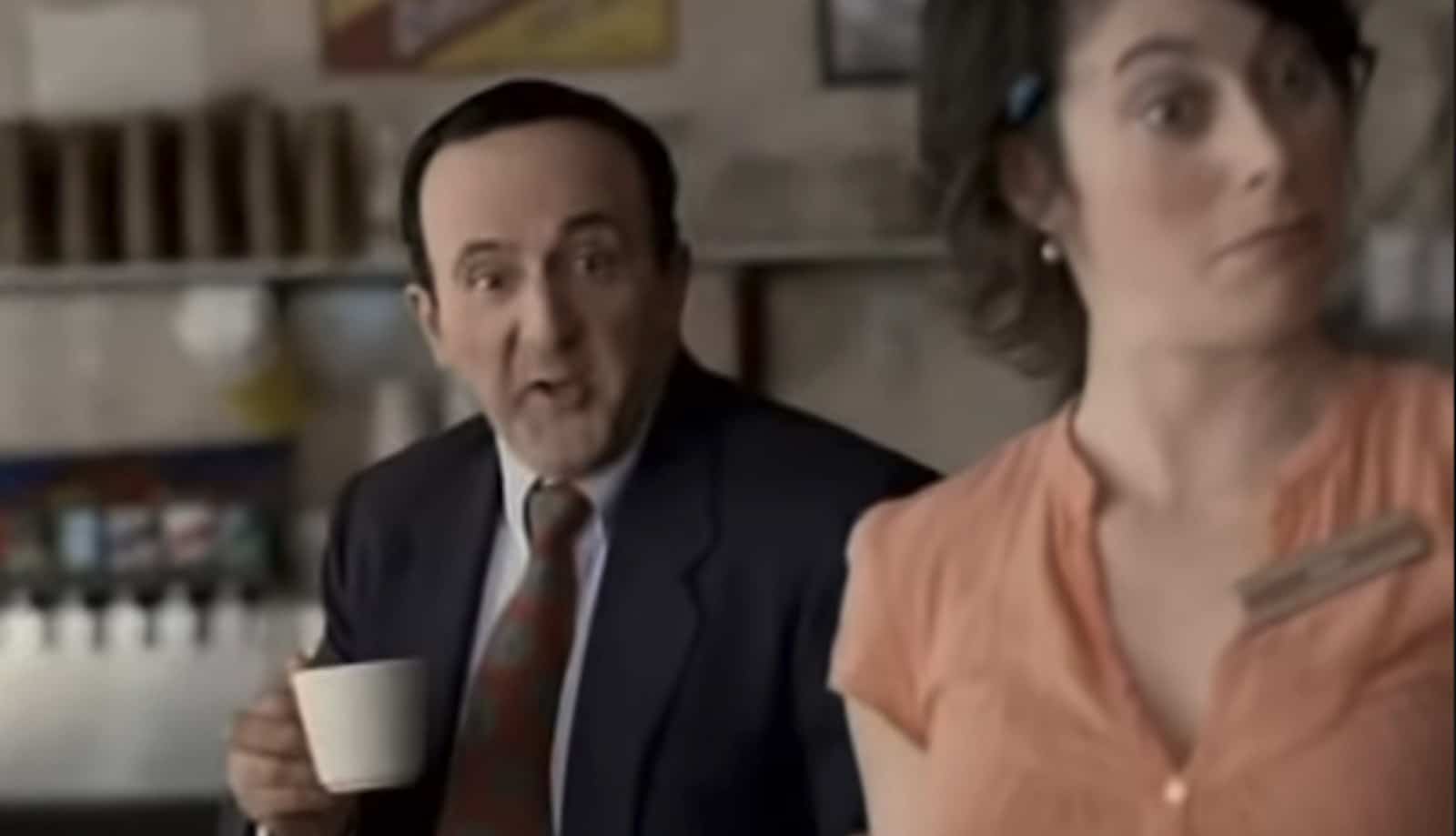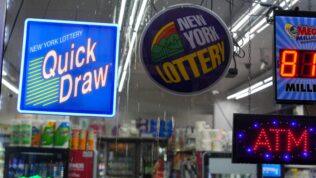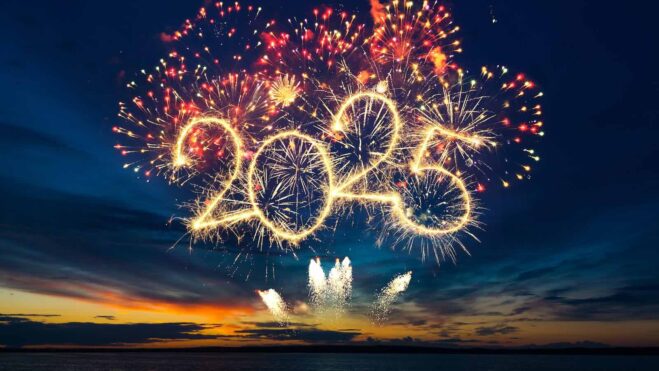Is This The Greatest Lottery Ad of All Time? Hey, You Never Know
Business boomed under the Ralph Buckley-led advertising campaign. Inevitably, there were detractors, including the governor.
4 min

If the goal of advertisement is to move product and make a lasting impression on the popular culture, then by any measure the 1990s New York State Lottery ad campaign whose slogan was “Hey, you never know” was an enormous success. The campaign, which premiered in 1992, was synonymous with the New York lottery and was the seminal ad campaign for the business for an entire generation of greater metropolitan New York City area consumers looking to hit it big.
“Hey, you never know” was the brainstorm of ad agency DDB New York, which landed a three-year contract with the New York state lottery account in 1988 and quickly made its mark with memorable campaign slogans such as “All you need Is a dollar and a dream.”
As catchy as they were, none of the campaigns succeeded on the scale of “Hey, you never know,” which won 81 national and international advertising awards between 1993 and 1995, including one for best overall lottery ad at the annual State and Provincial Lotteries awards for “The Pool” ad.

The billboard execution of the ad depicted an ordinary, contented-looking man in a pool, floating in a tube, wearing a swimmer’s cap and goggles. Behind him is a mansion situated on an impressive, manicured estate. The banner below: “Hey, you never know.”
Ralph the Lottery Guy
All of the spots employed either humor, centered around ordinary people experiencing extraordinary things, such as this one from 1992 depicting a middle class woman knitting during a live opera performance in her home, or our innate desire to avenge slights or show up our betters, like this guy, who gets to stick it to his snooty former high school principal and a stuck-up cheerleader type thanks to the NY Lotto.
The state lottery capitalized on the ad’s enormous popularity by launching a product line that included T-shirts, visors, coins, hats, and other memorabilia that consumers snatched up to signal to others that they were in on the joke, while simultaneously cementing the iconic nature of the brand.
Adding to the brand’s identifiability was actor Ralph Buckley, who became the voice and the face of the ad campaign, eventually appearing at lottery events, presenting oversized checks, shaking hands. He appeared in numerous spots like this one, filmed from atop the Twin Towers, in 1995.
Buckley’s role became so popular that in 1997 the lottery ran a contest to find a stand-in for him who would appear in a new Lotto commercial or two proclaiming the size of the weekly Lotto jackpot. Almost 23,000 New York Lottery players mailed in applications.
In September, an 80-year-old woman named Adeline Seymour from Thendara, New York, near Utica, won and was paid union wages to record her spot, which ran in conjunction with the usual spots recorded by Buckley, like this one from 1997.
As evidence of how ubiquitous and well known the character and ad had become, the New York Daily News introduced the contest this way: “The job, which all but the most out-of-touch New Yorkers know, now features Ralph the Lottery Guy, the sad-eyed character who is at least as recognizable as Gov. Pataki,” a reference to then-governor George Pataki, who succeeded Mario Cuomo in 1995.
Advertising And Expectations
Business boomed. New York was spending roughly $42 million on advertising, more than any lottery commission in the country, but it was also the largest lottery in the nation, with $3 billion in sales in 1995. For the fiscal year 1994-’95, the lottery generated $1.24 billion for New York schools. For the same period, lottery sales for all games totaled $3.029 billion, a 27.8% increase over the previous year.
Inevitably, there were detractors. Critics of the campaign worried that, to ostensibly gullible consumers, the ads misrepresented the actual chances of winning. They wanted a return to the more altruistic approach that marked the lottery’s earliest ad campaigns — namely highlighting the financial benefits to the state’s school system. Not so much advertising, but public service announcements, such as the one rolled out in 1967 with the introduction of New York’s first lottery: “Your chance of a lifetime to help education.”
Gov. Pataki drove much of the opposition, demanding that the New York State Lottery alter its approach because “[it] fostered false expectations with bold promises of easy money,” according to The New York Times. “It has always bothered me to hold up the prospect of instant riches,” Pataki was quoted.
Others accused Pataki of political posturing, noting his support for raising state revenues with the introduction of a new, fast-paced lottery game called “Quick Draw.” What was the difference? Why was one game of chance less supposedly harmful than the other? Nevertheless, by 1996, “Hey, you never know” was largely out, and “New York Lottery, it makes us all a little richer,” was largely in.
Still, given DDB’s success over its decade-long relationship with the New York Lottery, advertising executives were shocked when the state dropped DDB in favor of Grey Advertising in New York following a mandated review in 1998. While many believed the change was in response to pressure from the governor’s office, Jeff Perlee, the lottery director, said it was a matter of cost — he estimated that the new contract could save more than $2.4 million over three years. Asked by The New York Times whether the new agency would carry over the Lotto theme, Toni Lee, a Grey spokeswoman, replied, “Hey, you never know.”
While the state lottery continued to grow, the relationship with Grey ended in 2001. DDB won back the account back and revived “Hey, you never know,” adding to its vault of classics this spot from 2003, featuring a tollbooth operator who wins the Lotto and consequently pays everyone’s fare.
Buckley got plenty of work too, such as this classic commercial from 2007 featuring famous announcers Johnny Gilbert, Ed McMahon, and Don LaFontaine.
One of the tenets of successful advertising is to know your audience, and in this regard as much as any other, the “Hey, you never know” campaign did its job by capturing the straight-forward spirit and casual bluster commonly associated with native New Yorkers — for better or worse.
It’s so “on the nose,” to borrow a Hollywood term, that comedian Pete Holmes lampooned it to perfect effect in a standup comedy special in 2011.
By 2012, “Hey, you never know” had been replaced fully by similarly clever ad campaigns with catchphrases like “Yeah, that kind of rich” and others, and they all have their own place among the cooler ads of our time. But for our money, “Hey, you never know” is a hard one to beat.









